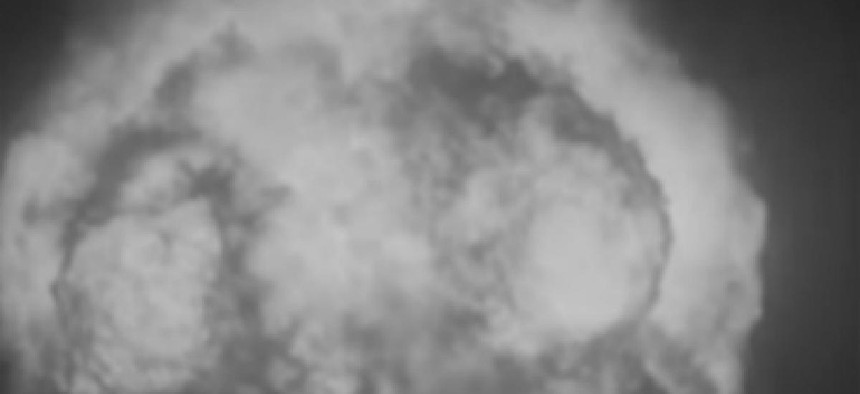Old films of nuke tests offer new data today

Digitized Cold War-era films of atmospheric nuclear tests are helping recalibrate data for modern analytics.

A still captured from a recently declassified video of a U.S. atmospheric nuclear weapons test. (Lawrence Livermore National Laboratory).
Thousands of high-speed films of the atmospheric nuclear test explosions conducted by the U.S. government between 1945 and 1962 that have been moldering away in secure vaults are finding new value in digitization, according to Lawrence Livermore National Lab.
LLNL researchers and film industry contractors are in the process of digitizing around 10,000 old films of those 210 test explosions. Detonations took place on Pacific and Atlantic Ocean coral atolls, and in the western deserts of the U.S. The high-speed film stock of each explosion, usually shot with multiple cameras at around 2,400 frames per second, are deteriorating and threatening to take valuable information with it, said LLNL researchers.
For the last five years, LLNL said in a March 15 statement, weapon physicist Greg Spriggs and a team of film experts, archivists and software developers have been on a mission to hunt down, scan, reanalyze and declassify the decomposing films sitting unseen in secured vaults at various sites around the U.S.
Originally, government scientists used a labor-intensive magnifying system to project explosion image onto a grid on a screen. That grid was used to measure the expansion of the nuclear fireball. The expansion of the ball of energy, an LLNL spokesman told FCW, is a function of time that can be precisely measured -- which in turn can yield data about the bomb and material that produced it.
The data can then be used to predict and analyze other explosions or potential explosions.
The old data, said Spriggs in the statement, has been off between 20 and even 30 percent when compared to measurements taken from the digital versions of the films. The digitization work, he said, has also yielded more consistent data and even additional data with potential use in forensic applications.
According to LLNL, Sprigs and his team have found about 6,500 of the 10,000, scanned 4,200 of them and declassified 750. An initial set has been posted to a YouTube Playlist.





